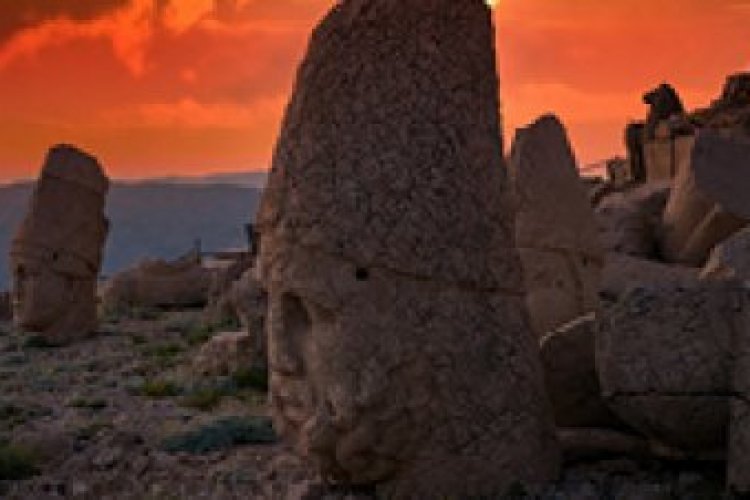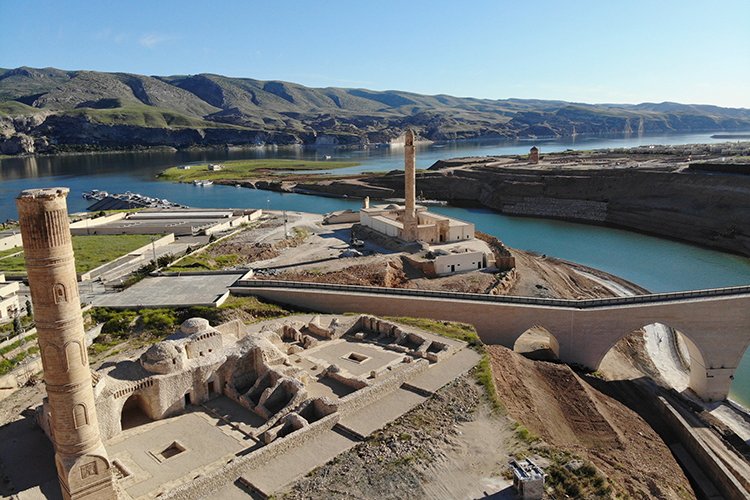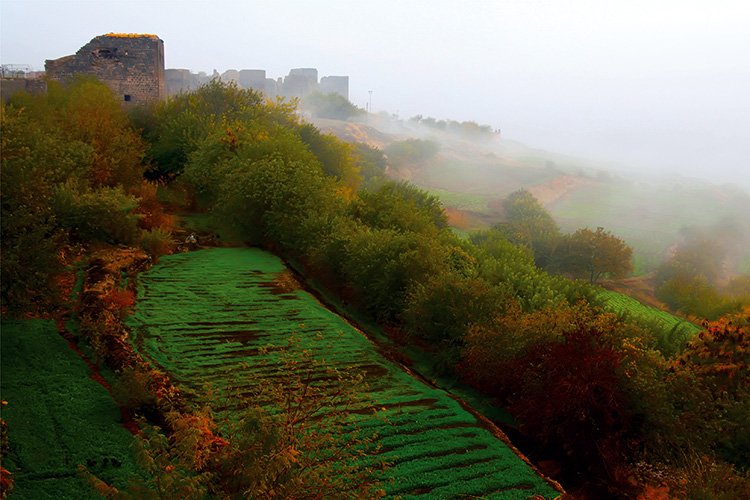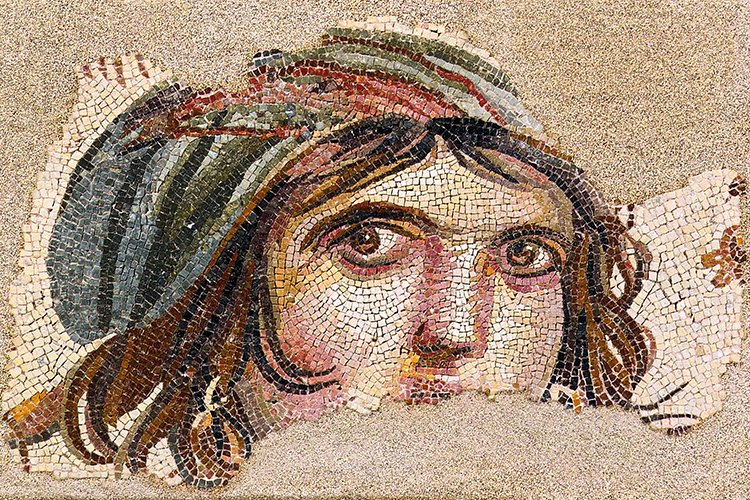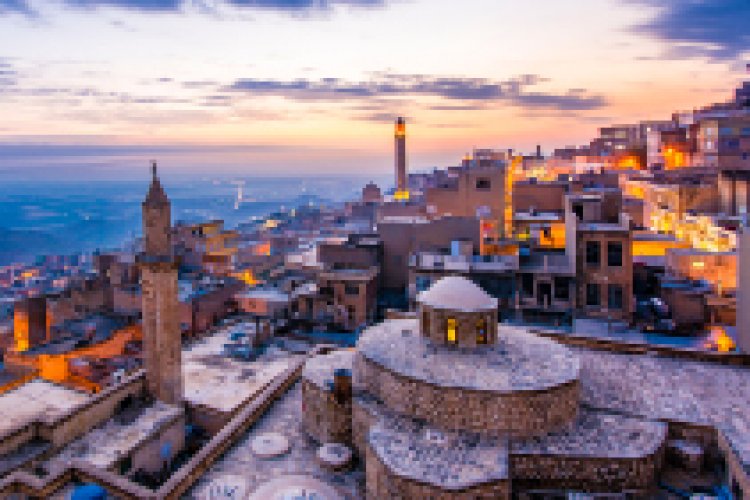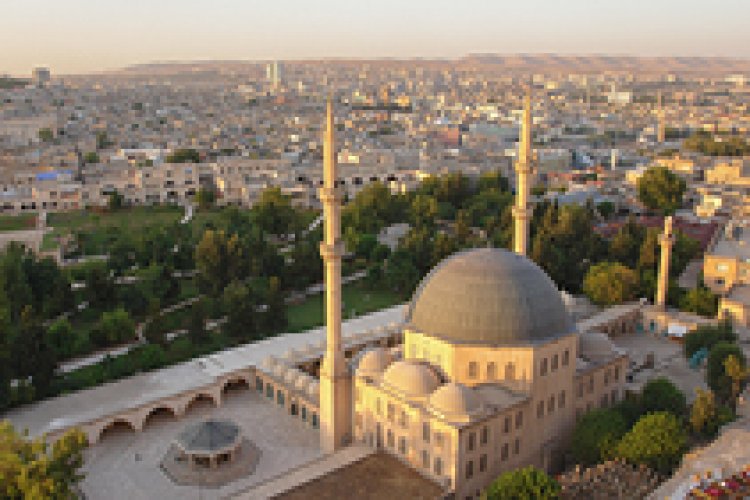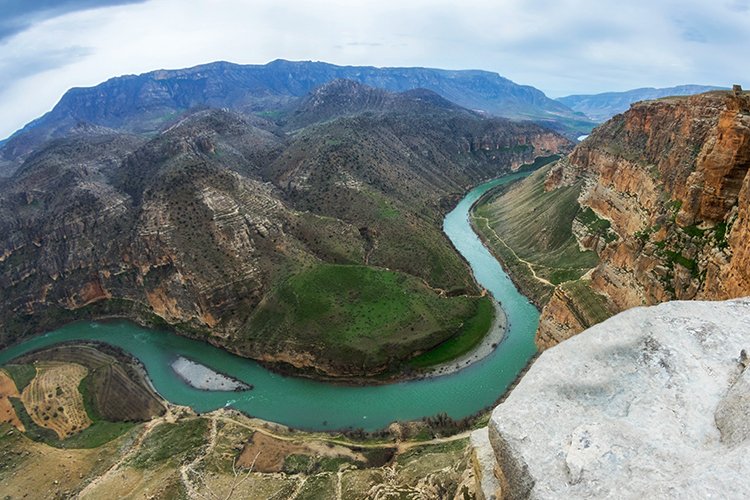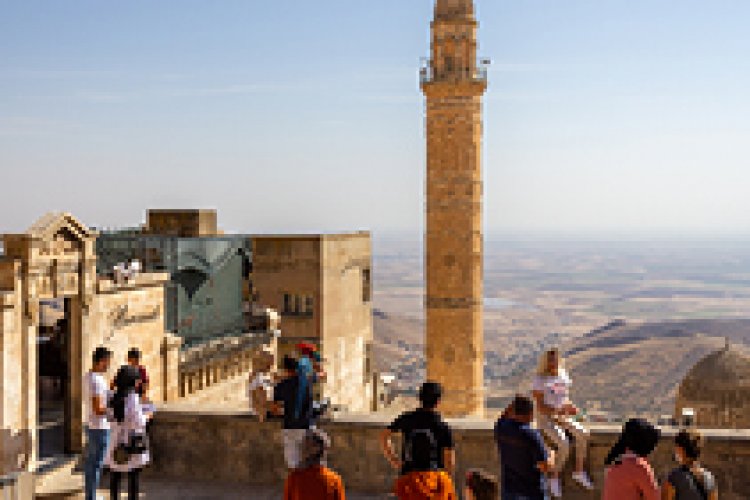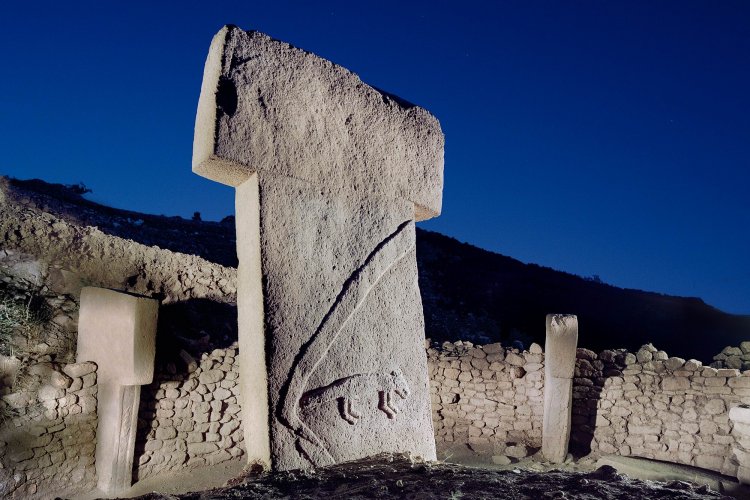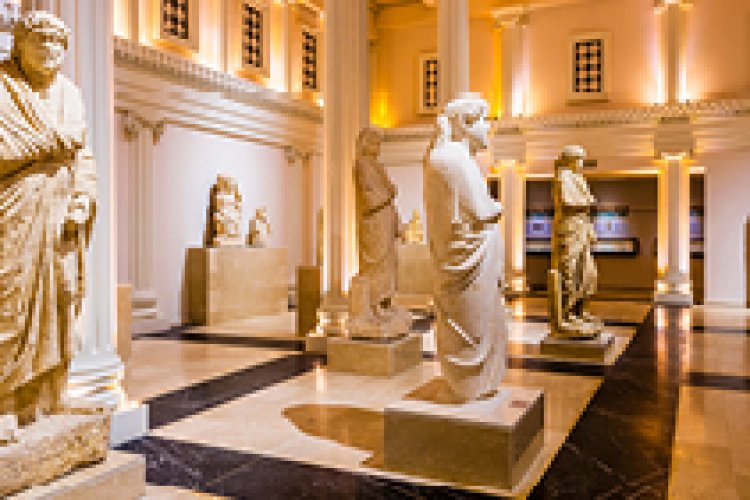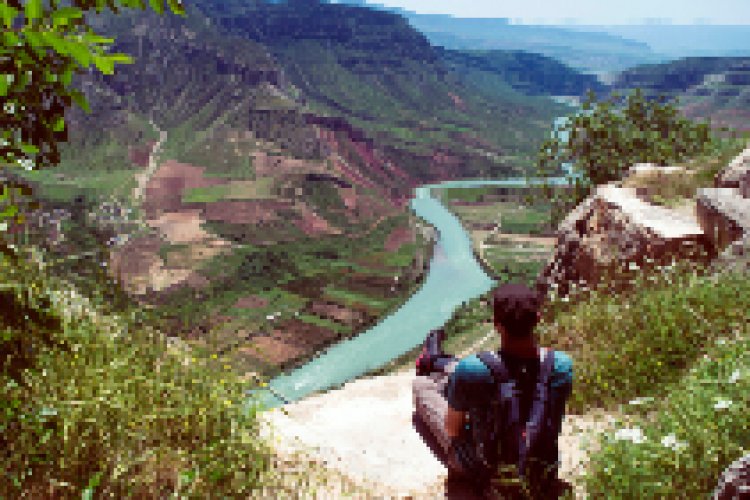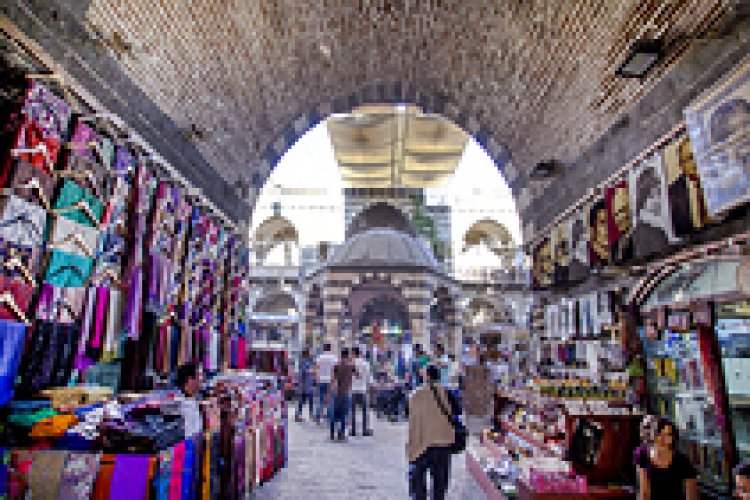Sanliurfa
This is the land where mankind built its first temple, settled down and farmed, in other words, "the place where it all began." Sanliurfa is the city of temples, churches and mosques, which has hosted many different and colorful cultures. Sanliurfa is the city of thousands of years old legends, the smell of the Middle Ages is still felt while walking around its bazaars. It is the place where Adam used to be a farmer and prophets like Abraham, His Holliness Ayyub,His Holiness Elyasa used to live. It is the place where prophets such as Shuayb, Hazrat Yaqub and Hazrat Elyasa lived. Today, Urfa is still standing with its thousands of acres of fertile lands, pistachio trees, wheat ears, lively trade life, bazaars, colorful and scaly 'dak' women, tumbler pigeons, elegant hoofed Arabian horses, timid gazelles, bald ibis who know the road to Ethiopia and sacred fish. Still alive, still real, still living.
Must Do
See the oldest statue in the world at the Urfa Museum
Get lost in the streets of Urfa, stop by the bird bazaar
See the old bazaars
Feed the fish in Balıklıgöl
Drink tea at Gumruk Inn
Sing folk songs and eat vegan steak tartar balls on Sira night
Drink licorice juice
Eat liver wrapped by yourself at Hasimiye
Visit ‘Gobekli Tepe’, your oldest history
Put your feet in Euphrates River
Eat chickpea sandwich at Birecik
See the bald ibises
Get on a camel at Harran
But isot pepper
Did You Know
Jesus Christ sent a letter stating that he blessed Urfa and his miraculous portrait on the handkerchief that he wiped his face with, with one of his apostles, Addai, to the King of Urfa, Abgar Ukkama. Christianity was accepted as a state religion for the first time by this king in Urfa.
Ataturk Dam, Turkey's largest and the world's fourth largest dam, has a set height of 169 meters, a length of 1600 meters and a thickness of 800 meters at the base. The power of the Euphrates and the operation of the water turbines can be watched from the observation terrace on the dam body.
The natural habitat of bald ibis, which is rapidly becoming extinct due to pesticides and overfishing, is Birecik on the Euphrates and the Nile River Valley.
Gazelles, whose homeland is known to be the Middle East and North Africa, are only seen near Ceylanpinar in Sanliurfa in Turkey.
Urfa is one of the cities that has made a name for itself in horse breeding. About one third of the Arabian horses in Turkey are bred in the stud farms in Urfa. In the Urfa culture, where the horse is considered a good luck, it is believed that the house where the horse is fed and the seven houses around it are given this auspiciousness.
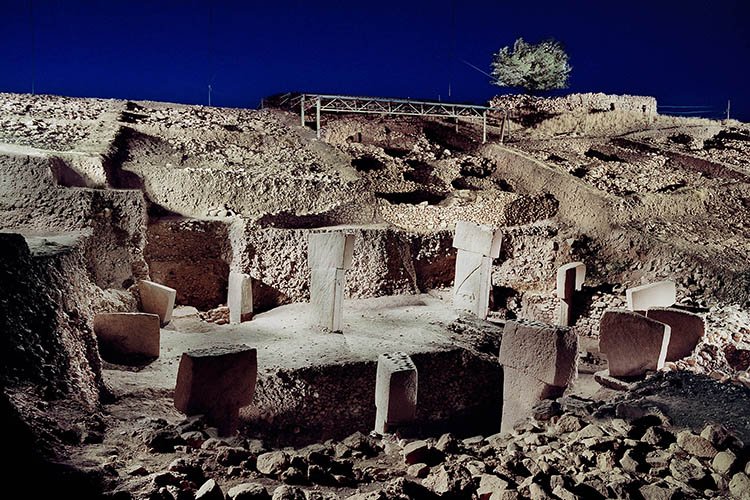
Gobeklitepe
The discovery of Göbekli Tepe, located 21 km from Şanlıurfa city center, has turned everything we know about the history of civilization upside down. Göbekli Tepe, thought to have been built in 10,000 BC, is the oldest monumental temple structure in the world. Göbekli Tepe has changed various theories of the history of civilization by proving that our hunter-gatherer ancestors had much more complex beliefs, forms of organization and technologies than we thought. At Göbekli Tepe, there are more than 20 elliptical T pillars, 2 in the center and 12 around the perimeter, weighing between 4 and 7 tons. On these columns, there are reliefs of animals such as foxes, lions/leopards, wild boars, wild donkeys, aurochs, spiders, snakes, cranes, ducks/antelope, bald ibis and a depiction similar to a fishing net. Since there were no metal tools at the time, it is thought that all of these were carved with the harder polished stones. These columns were cut from a quarry about 500 meters from Göbekli Tepe and brought here. In order to achieve this, the hunter-gatherers of the period must have been seriously organized. Göbekli Tepe, the oldest monumental structure in the world, invites you to Şanlıurfa to discover the history of humanity and your own history with all its mystery.
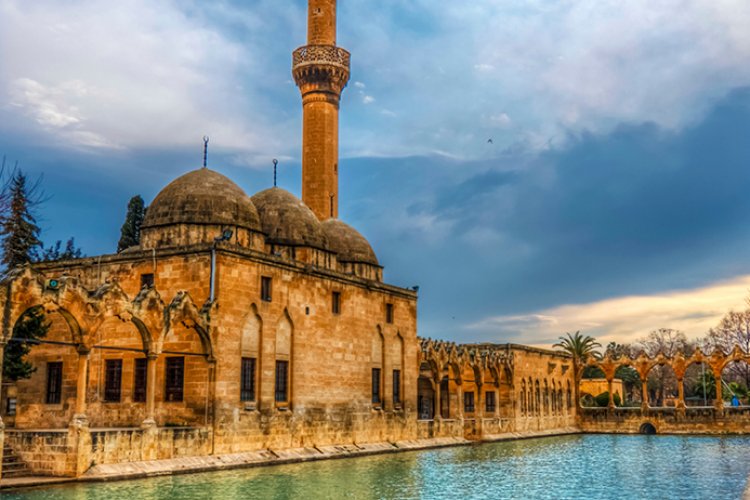
Balıklıgöl
Prophet Abraham, who was born secretly in a cave by his mother Zeliha after the cruel ruler of the time, Nimrod, put all male children to the sword and killed them, and who was sometimes fed and raised by his mother and sometimes by gazelles, struggles against Nimrod and the idol worshippers. Against the rebellion of Prophet Abraham, who called the people to believe in one God by breaking and smashing idols, Nimrod wanted to burn Prophet Abraham on a large pyre. As soon as Prophet Abraham falls on the fire, a clear lake appears in the place of the fire. The burning wood turns into fish. The lake is called Lake Halil-ur Rahman. Here is Balıklıgöl, shaded by centuries-old plane trees, with the Ottoman monument Rızvaniye Mosque decorating its edge like a lace. The abundant and fertile water boiling on the plain at the foot of the castle slope has been considered sacred throughout history. No one touches the fish living in it, and feeding them is considered a good deed. At the southeastern end of the lake is the Halil Ibrahim Mosque, an Ayyubid work, and adjacent to this mosque is the lodge that once housed the Church of Mary.
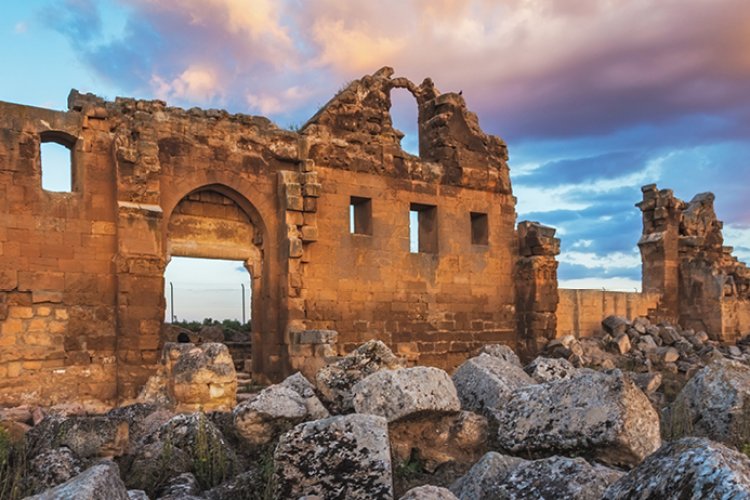
Harran
It is believed to be the land where man first set foot, where the plow was first used, where the ox was first ploughed. According to legend, Adam and Eve first came to the Harran Plain after being expelled from paradise. Harran, referred to as "Harranum" in Assyrian sources, "Kharran" in Greek sources and "Carrhae" in Roman sources, means "the place where roads meet". The fact that the flow of trade between Anatolia and Mesopotamia was carried out through Harran for thousands of years has led to the formation of a rich cultural accumulation in this historical city. The most remarkable artifacts found during excavations in Harran, which dates back to the 3rd millennium BC, are the cuneiform terracotta tablets and votive inscriptions mentioning King Nabuna and the Temple of Sin, dating back to the 6th century BC.
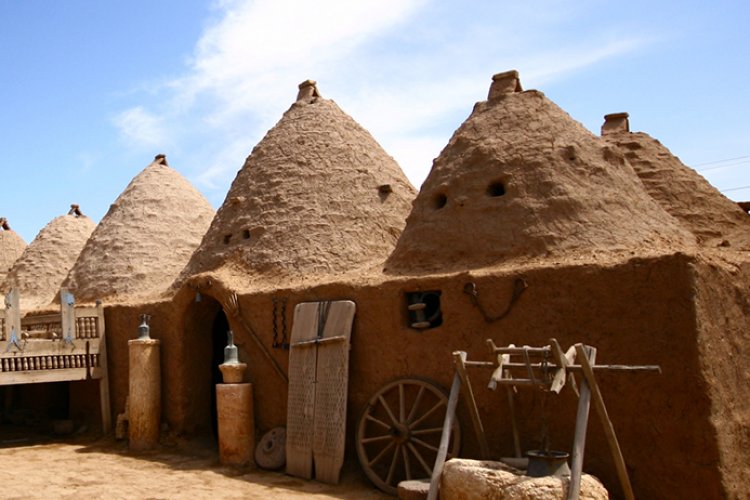
Harran Kumbet Houses
Although they were built on the ruins of the old city in the last 150-200 years, the cone-shaped conical domed houses have become the most well-known cultural heritage of Harran. The domes of Harran houses, also called 'Kovan Houses', reach a maximum height of 5 meters from the inside and are built with a series of 30-40 bricks. Double, triple and up to six dome groups were connected to each other with arches from the inside, resulting in large spaces. These houses, which are suitable for the climate of the region, attract attention with being cool in summer and warm in winter. It is said that in the domed Harran Houses, chickens lay more eggs, some animals such as horses are more docile, and onions sprout quickly.
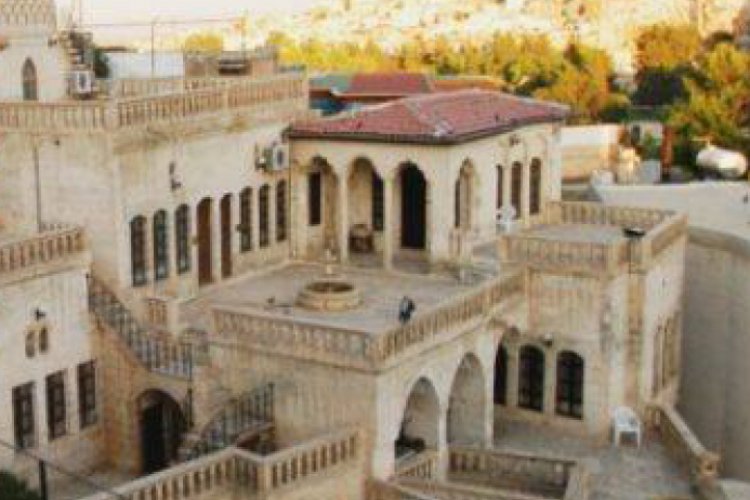
Old Urfa
The old neighborhoods of Urfa, full of labyrinthine streets, where you hear people's voices you can't tell where they are coming from as you walk through the narrow streets... "Urfa Houses" where you can see the big courtyard and life inside through a small doorway, with street doors with knockers designed separately for men and women, with iwans, arched keystones, and roofs where you sleep by counting the stars in summer. In old Urfa, abbaras still bring their guests to the streets, mansions and mosques. Life goes on in the streets with women dressed in sparkling velvet, men with purple mullets, doves and children's laughter. As you walk through Haşimiye Square, the historical bazaars of Urfa and the Ottoman-era Gümrük Han, which is reached through a tiny arched doorway through copperware and isot sellers, mobile liver kebab vendors. The water of Halil-ur Rahman Lake flows through the courtyard of this inn, built during the reign of Suleiman the Magnificent, is surrounded by other bazaars. Step inside Old Urfa and you will forget the outside.

Old Halfeti
Halfeti, once known as the "Hidden Paradise" with its orchards, stone houses with courtyards and flower gardens on the banks of the Euphrates, is now mostly submerged under the waters of the Birecik Dam, but tourism has developed rapidly on the slopes left behind by Halfeti. Halfeti Houses, which are usually two-storey, stone and flat-roofed, have a layout that does not block each other's view with their parallel arrangement to the Euphrates. The black rose, which grows only in Halfeti in our country, is an indispensable ornament of every house in the district without exception. The architectural remains in Rumkale, one of the most important centers of the history of Christianity, which is referred to as a cultural heritage along with Halfeti, have a Late Roman and Medieval character. According to legend, John, one of the apostles of Jesus Christ, made this place his home during the Roman period and copied copies of the Bible in a room carved out of the rock.
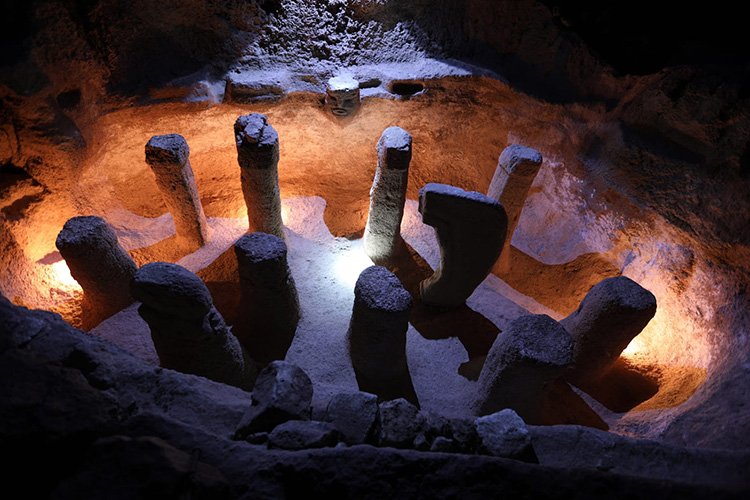
Karahan Tepe
Claimed to be the twin of Göbeklitepe, full of T-columns just like it, Karahantepe constitutes an important new tourist destination for Şanlıurfa. The structures unearthed in the Karahantepe ruins are monumental and unique ruins that we know from Göbeklitepe, dating back to approximately 12 thousand years ago. Along with Göbeklitepe, Karahantepe is one of the settlements containing the best preserved archaeological remains of the Neolithic Age.
